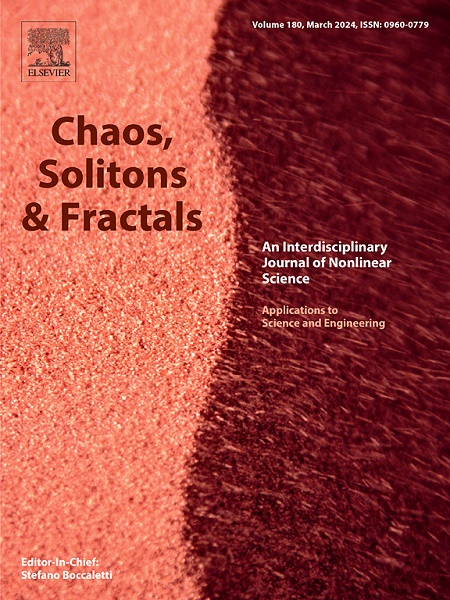热辐射作用下Boger纳米流体形态效应及纳米层导热系数的有限元分析
IF 5.6
1区 数学
Q1 MATHEMATICS, INTERDISCIPLINARY APPLICATIONS
引用次数: 0
摘要
本研究的重点是Boger纳米流体在拉伸薄片上的二维磁流体动力学Darcy-Forchheimer流动,并在基于直径的粘度和导热模型中进行了多次增强。传热分析考虑了热辐射、粘性耗散和焦耳加热的影响。为了解释纳米颗粒的几何形状,基于铜纳米颗粒的不同形状和尺寸因素,应用了非球形导热系数和基于直径的粘度模型。通过纳米流体流动模拟,分析了金属纳米颗粒形态对传热性能的影响。采用适当的相似变量将控制非线性偏微分方程转换为无因次形式,并通过罚项法消除压力项。采用有限元法对所得的无量纲方程进行了求解,并在MATLAB中进行了仿真。不同参数对速度和温度分布的影响揭示了三种粘度和导热模型的不同行为。溶剂分数参数的增加增强了速度分布,第三种基于直径的粘度模型在更小的纳米颗粒直径下显示出最佳的流动行为。相反,较高的Forchheimer数值抑制了速度分布,第二种基于直径的粘度模型显示,在较大的直径值下,速度曲线的降低最为显著。在非球形导热模型中,更大的铜纳米颗粒直径和更高的形状因子增强了温度分布中的传热,其中血小板形状的纳米颗粒表现出最佳的热性能。本文章由计算机程序翻译,如有差异,请以英文原文为准。
Finite element analysis of morphological effects and nanolayer thermal conductivity in Boger nanofluids under thermal radiation
This study focuses on the two-dimensional magnetohydrodynamic Darcy–Forchheimer flow of a Boger nanofluid over a stretching sheet, incorporating multiple enhancements in the diameter-based viscosity and thermal conductivity models. The heat transfer analysis considers the effects of thermal radiation, viscous dissipation, and Joule heating. To account for nanoparticle geometry, non-spherical thermal conductivity and diameter-based viscosity models are applied based on various shapes and size factor of copper nanoparticles. The influence of metallic nanoparticle morphology on heat transfer performance is analyzed through nanofluid flow simulations. The governing nonlinear partial differential equations are converted into dimensionless form using appropriate similarity variables, with the pressure term eliminated via the penalty method. The resulting dimensionless equations are solved using the finite element method (FEM), and all simulations are performed in MATLAB. The impact of various parameters on the velocity and temperature profiles reveals distinct behaviors across the three viscosity and thermal conductivity models. An increase in the solvent fraction parameter enhances the velocity profile, with the third diameter-based viscosity model demonstrating optimal flow behavior at smaller nanoparticle diameters. Conversely, higher Forchheimer numbers suppress the velocity profile, with the second diameter-based viscosity model showing the most significant reduction at larger diameter values. Larger copper nanoparticle diameters and higher shape factors enhance heat transfer in the temperature profile for the non-spherical thermal conductivity model, with platelet-shaped nanoparticles exhibiting the best thermal performance.
求助全文
通过发布文献求助,成功后即可免费获取论文全文。
去求助
来源期刊

Chaos Solitons & Fractals
物理-数学跨学科应用
CiteScore
13.20
自引率
10.30%
发文量
1087
审稿时长
9 months
期刊介绍:
Chaos, Solitons & Fractals strives to establish itself as a premier journal in the interdisciplinary realm of Nonlinear Science, Non-equilibrium, and Complex Phenomena. It welcomes submissions covering a broad spectrum of topics within this field, including dynamics, non-equilibrium processes in physics, chemistry, and geophysics, complex matter and networks, mathematical models, computational biology, applications to quantum and mesoscopic phenomena, fluctuations and random processes, self-organization, and social phenomena.
 求助内容:
求助内容: 应助结果提醒方式:
应助结果提醒方式:


